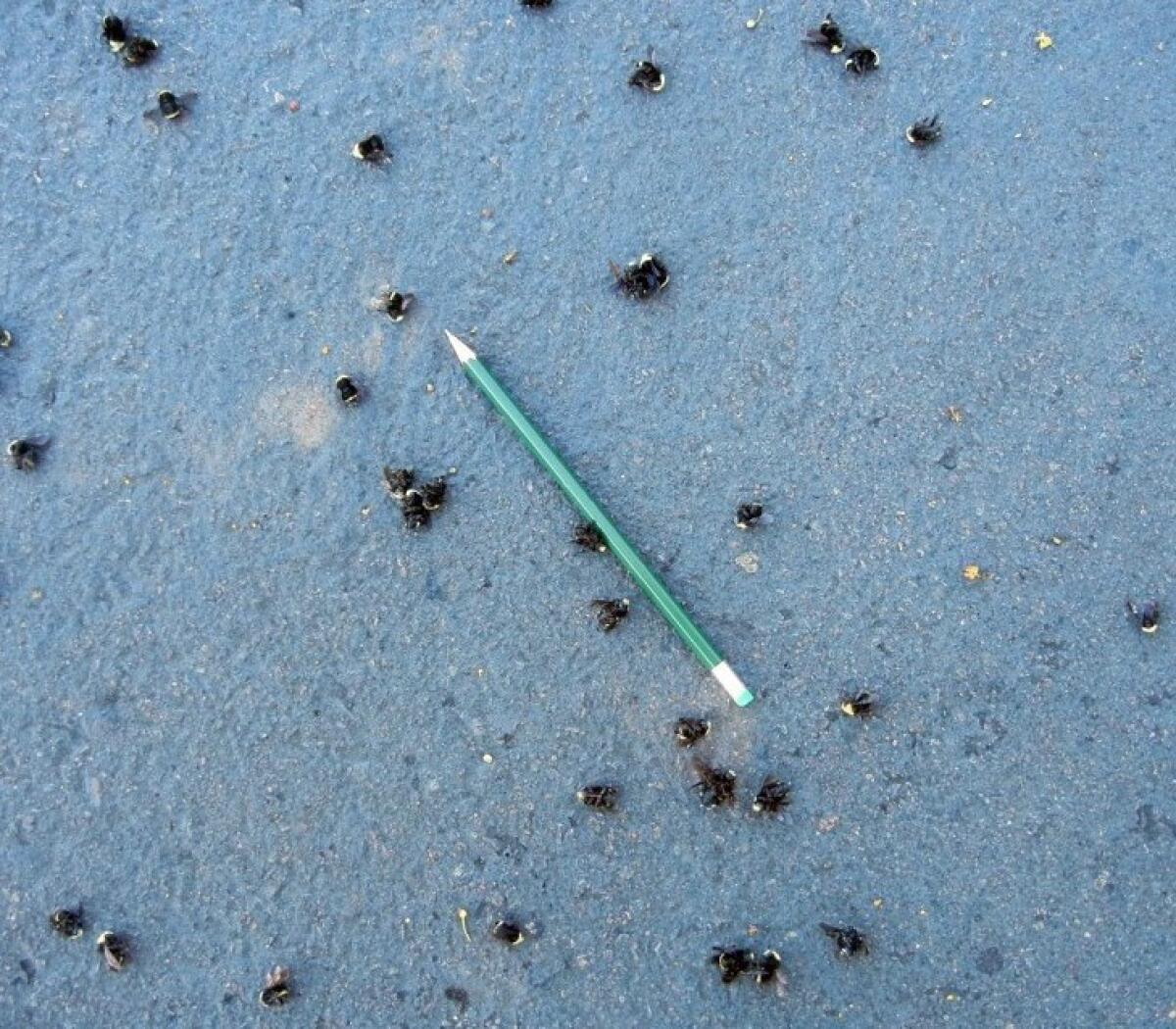Pesticide blamed in death of 25,000 bumblebees in Oregon

- Share via
A pesticide used to control aphids has been singled out as the cause in this week’s deaths of tens of thousands of bumblebees in a retail parking lot in Oregon, state officials said Friday.
At least 25,000 bees were found dead and more were dying in a Target parking lot in Wilsonville, about 18 miles southwest of Portland, in what experts have described as the largest known die-off of bees in the United States.
Witnesses reported bees falling from trees and littering the ground.
Crews worked Friday morning to wrap protective netting, purchased by the city, around the 55 European linden trees in the area. Workers stood on cherry-pickers to place the bee-proof shade material around the large trees, which are in full bloom.
On Monday, concerned calls from shoppers prompted the Xerces Society for Invertebrate Conservation -- a Portland-area conservation group -- to sound an alarm. The Oregon State Department of Agriculture responded by sending staff to collect samples of insects and foliage from the linden trees.
State officials were able to directly link the deaths to the pesticide Safari, which was sprayed on the trees Saturday to control aphids, the department said Friday in a statement. Officials have not yet identified the property management agency or the crews that applied the pesticide.
“It was a mistake to put it on linden trees in bloom,” said Dan Hilburn, director of plant programs with the Oregon State Department of Agriculture. Linden flowers contain nectar highly attractive to bees.
The pesticide, in a class called neonicotinoids, is lethal to bees and other pollinators. Honeybees, ladybird beetles (ladybugs) and syrphid flies were also found dead in the lot, said Scott Hoffman Black, executive director of the Xerces Society.
In terms of assessing penalties, investigators are focusing on whether the pesticide was applied inconsistently with its labeling, and whether the activity was conducted in a faulty, careless or negligent manner, said Dale Mitchell, the pesticide compliance program manager with the Oregon Department of Agriculture.
Violations can carry fines ranging from $1,000 to $10,000, Mitchell said.
In fact, the product label reads:
“This product is highly toxic to bees exposed to direct treatment or residues on blooming crops or weeds. Do not apply this product or allow it to drift to blooming crops or weeds if bees are visiting the treatment area.”
The environmental impact of neonicotinoids has come under increasing scrutiny worldwide. In April, the European Union banned the use of three types of neonicotinoid pesticides in crops that attract bees.
In the United States, one group, the Center for Food Safety, has sued the Environmental Protection Agency, saying that neonicotinoids are not regulated properly.
In a statement, the U.S. Environmental Protection Agency said it was aware of the Wilsonville bee deaths. “The EPA is tracking the incident closely but at this time we cannot comment on ongoing investigations,” the agency said.
The Wilsonville incident marked an ominous start to National Pollinator Week, an event designed to bring attention to the disappearance of bees. An estimated 10 million hives have been lost since colony collapse disorder first emerged in 2006.
Bumblebee hives are much smaller than honeybee hives, and an estimated 150 colonies were destroyed in Wilsonville, Black said.
[For the record, 5:22 p.m., June 25: An earlier version of this post said an estimated 10 billion hives been lost since colony collapse disorder first emerged in 2006. Only 10 million have been lost.]
ALSO:
Passenger jets come too close over New York City
Witness in Whitey Bulger trial: Hit was like ‘a firing squad’
Brooke Astor’s son denied new trial on charges he fleeced mom
Twitter: @devkelly17
More to Read
Sign up for Essential California
The most important California stories and recommendations in your inbox every morning.
You may occasionally receive promotional content from the Los Angeles Times.













